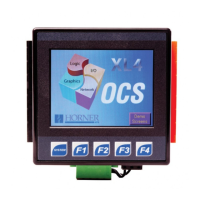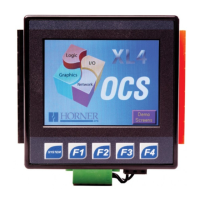What to do if my HORNER Touchscreen XL4/XL4 Prime OCS will not download the project file?
- TtoninelsonAug 5, 2025
If your XL4/XL4 Prime OCS is not downloading the project file, ensure that the project file is saved as a .pgm file and not a .csp file. Also, the file's I/O configuration must match the XL4/XL4 Prime configuration for it to download correctly.


